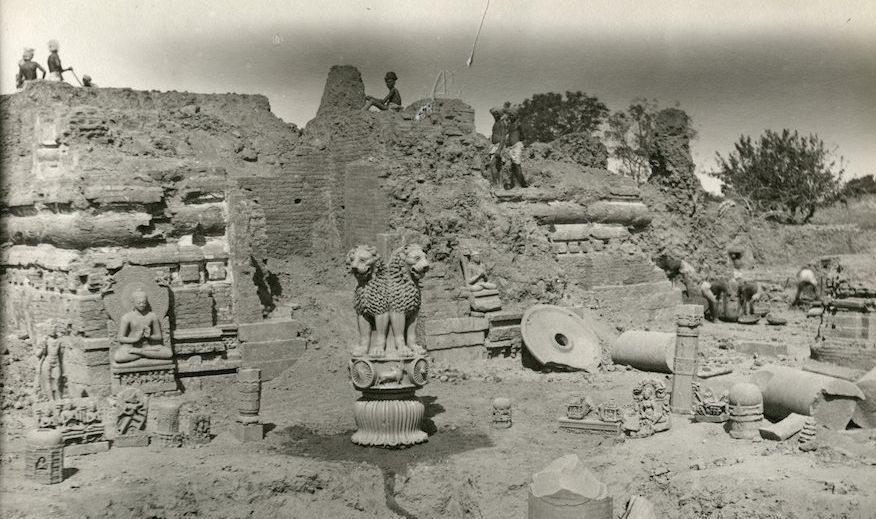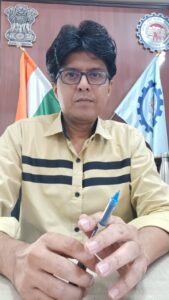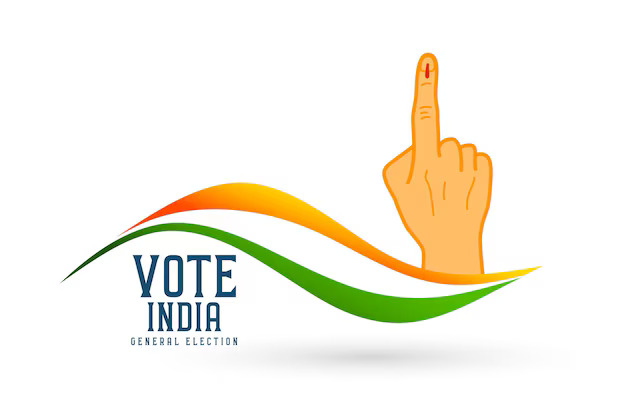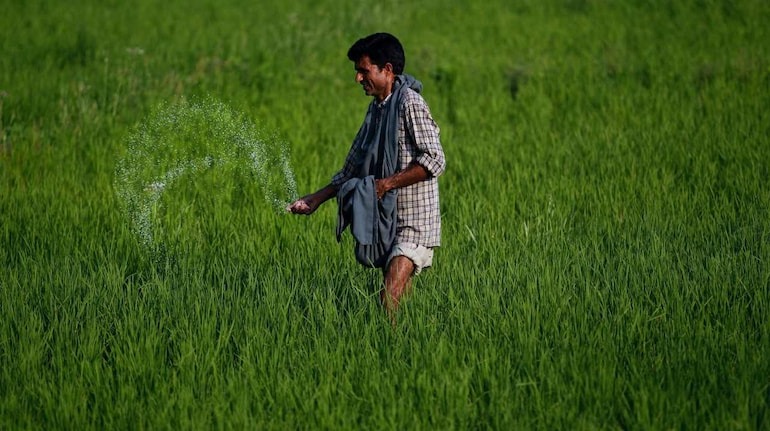
The newly independent India was highly inspired by the ethical and welfare principles adopted by Emperor Ashoka, hence the Ashoka Chakra was adopted on 22nd July 1947 in the centre of the Tricolor of India and the four lion capital on Ashokan pillar at Sarnath as National Emblem on 26th January 1950 by Government of India. On 22nd July 1947 Jawaharlal Nehru introduced the resolution for adoption of the National Flag. The discussion on this resolution reveals the thought process behind the choice of Ashoka Chakra at the center of our tricolor. The selective opinions expressed by the members of the Constituent Assembly about Emperor Ashoka are given below :-
1. JAWAHARLAL NEHRU – But what type of wheel should we have ? Our minds went back to many wheels but notably one famous wheel, which had appeared in many places and which all of us have seen, the one at the top of the capital of the Asoka column and in many other places. That wheel is a symbol of India’s ancient culture, it is a symbol of the many things that India had stood for through the ages. So we thought that this Chakra emblem should be there, and that wheel appears. For my part, I am exceedingly happy that in this sense indirectly we have associated with this Flag of ours not only this emblem but in a sense the name of Asoka, one of the most magnificent names not only in India’s history but in world history. Now because I have mentioned the name of Asoka I should like you to think that the Asokan period in Indian history was essentially an international period of Indian history. It was not a narrowly national period. It was a period when India’s ambassadors went abroad to far countries and went abroad not in the way of an Empire and imperialism but as ambassadors of peace and culture and goodwill.
2. SETH GOVIND DAS – After the battle of Kalinga, Asoka tried to unite the whole world with love and he achieved such success that the historians not only of this country but also of the whole world admit that there has been no Emperor like Asoka in the world. Mr. H. G. Wells writes in his History of the World that while the rest of the Emperors led a bloody life, Asoka alone tried to unite the world with love.
3. SHRI V. I. MUNISWAMI PILLAI – I also welcome the introduction of the Sarnath Lion Capital of Asoka. Asoka, coming as he did after the great Buddhist order, has given us the great Panchaseelam, above all, sympathy for humanity.
4. SIR S. RADHAKRISHNAN – We cannot attain purity, we cannot gain our goal of truth, unless we walk in the path of virtue. The Asoka’s wheel represents to us the wheel of the Law, the wheel Dharma. Truth can be gained only by the pursuit of the path of Dharma, by the practice of virtue. Truth – Satya, Dharma -Virtue, these ought to be the controlling principles of all those who work under this Flag.
5. Dr. MOHAN SINHA MEHTA – Sir, as he explained to us the contents of the Flag, and its design, especially when he was coming to the Chakra of Asoka’s column, I thought he would also refer to it as symbolizing the participation of the Indian States in the Indian Union. For the first time, Sir, after a long, long time, we will have India ruled for India and by Indians. ………………..
Am I far wrong in saying that the Chakra of Asoka represents the Indian States, because, since the time of Asoka the Great, the whole country has not been under Indian rule, ruled by Indians for Indians?
6. SAIYID MOHAMMAD SAADULLA – The Dharma chakra of Asoka reminds us of the condition of the people at the time of that great Buddhist Emperor of India. He ruled not for his personal aggrandizement but for the contentment, peace and prosperity of the people under his charge.
This emblem now embodied in our National Flag ought to remind every administrator and every citizen of the federation of India that we should forget the past and look to the future and try to carry on the tradition of that great Buddhist Emperor Asoka.
7. LAKSHMI NARAYAN SAHU – This wheel on this Flag reminds me also of many associations connected with Kalinga and Magadha. Asoka from Magadha went over to Kalinga and fought a great battle. After very heavy carnage, he was turned into a gentle being, the gentle Asoka; and it is there that the Kalingas in a way conquered Asoka.
When I see this Flag here, associated with the name of Asoka and also with Buddha, I am reminded that our country Kalinga after a great battle taught a good lesson to Asoka, a non-violent one.
8. SAROJINI NAIDU – That wheel, what does it represent? It represents the Dharma Chakra of Asoka the Magnificent who sent his message of peace and brotherhood all over the world. Did he not anticipate the modern ideal of fellowship and brotherhood and cooperation? ………………………………………………..]
Emperor Ashoka Maurya was the Architect of the Constitution of Ancient India which was written on the most durable and tamper proof medium, the Constitution which was made visible to all the masses and sculpted in their own popular languages of Prakrit, Pali, using the Ashokan script of Dhamma lipi (erroneously referred as Bramhi in academic parlance).
The inscriptions, engravings, edicts carved on the rocks, pillars, boulders located on hills, mountains, walls of the caves are very much comparable with the different provisions of the Directive Principles of State Policy, Fundamental duties, and Fundamental rights enshrined in the Constitution of modern India.
Table of Contents
ToggleEDICTS COMPARABLE WITH THE DIRECTIVE PRINCIPLES OF STATE POLICY
– How should the administration, ministers and officials work.
– How should be their conduct while carrying on their official duties.
– What should be their duties as Ministers & officers.
– What are the different welfare works and policies being undertaken by the administration.
Rock edict III – Rajjukas (Welfare & Judicial officials) & Pradesikas (Police officers) shall set out set out every five years on a circuit for inspection throughout their charges.
Rock edict VI – Formerly there was no transaction of state business and no reporting of incidents at all hours. Now the reporters may appear before me for reporting the affairs of the people at any time & place, whether I am engaged in eating, or in the bedchamber or in the harem or on the walking path or in the garden or in the carriage.
– When I issue an order orally in connection with any donation or proclamation or when an emergent work presses itself or there is any controversy or argumentation in respect of any particular view, the fact must be reported to me immediately at any place and at any time.
– I am never complacent in regard to my exertions or the dispatch of people’s business by me. I consider it my only duty to promote the welfare of all men. There is verily no duty which is more important to me than promoting the welfare of all men.
– Therefore this record has been caused to be written by me on stone for the following purpose : so that it can last for a long time and that my sons, grandsons and great grandsons may conform to it for the welfare of all men.
Rock edict II – Arrangements for medical treatment of men and for animals, import and plantation of medicinal herbs, roots, plants. Construction of wells and plantation of trees alongside roads for enjoyment of humans and animals.
EDICTS COMPARABLE WITH THE FUNDAMENTAL DUTIES OF CITIZENS
– How should be the social & religious conduct of the people in their day-to-day lives.
– How should be the financial conduct of the people in their day-to-day lives.
– What should be done to establish harmony and peace in the empire.
Rock edict I – No living being should be slaughtered for sacrifice.
Rock edict III – OBEDIENCE to father & mother, LIBERALITY to friends, acquaintances, relatives, Bramhanas & Shramanas, and ABSTENTION from slaughter of living beings is meritorious.
Meritorious is to spend little and store little.
Rock edict XXII – Respect all faiths “One should not honour only one’s own faith and condemn the faiths of others, but one should honour others’ religions. So doing, one helps one’s own religion to grow and renders service to the religions of others too. In acting otherwise one digs the grave of one’s own religion and also does harm to other religions. Whosoever honours his own religion and condemns other religions, does so indeed through devotion to his own religion,. But, in so doing he injures his own religion more gravely. So concord is good; let all listen, and be willing to listen to the doctrines professed by others.”
And the beauty of this is that today also we can still see, read, interpret and cherish this Constitution of Ancient India sculpted by this great Emperor.
EMPEROR ASHOKA AND MAURYAN CONSTITUTION OF ANCIENT INDIA
Views expressed are purely personal.
Dr. Hemant M Tirpude.
B D S- Bachelor in Dental Surgery.
Regional Provident Fund Commissioner, EPFO, Ministry of Labour and Employment, Government of India.
Currently posted at Hyderabad.



